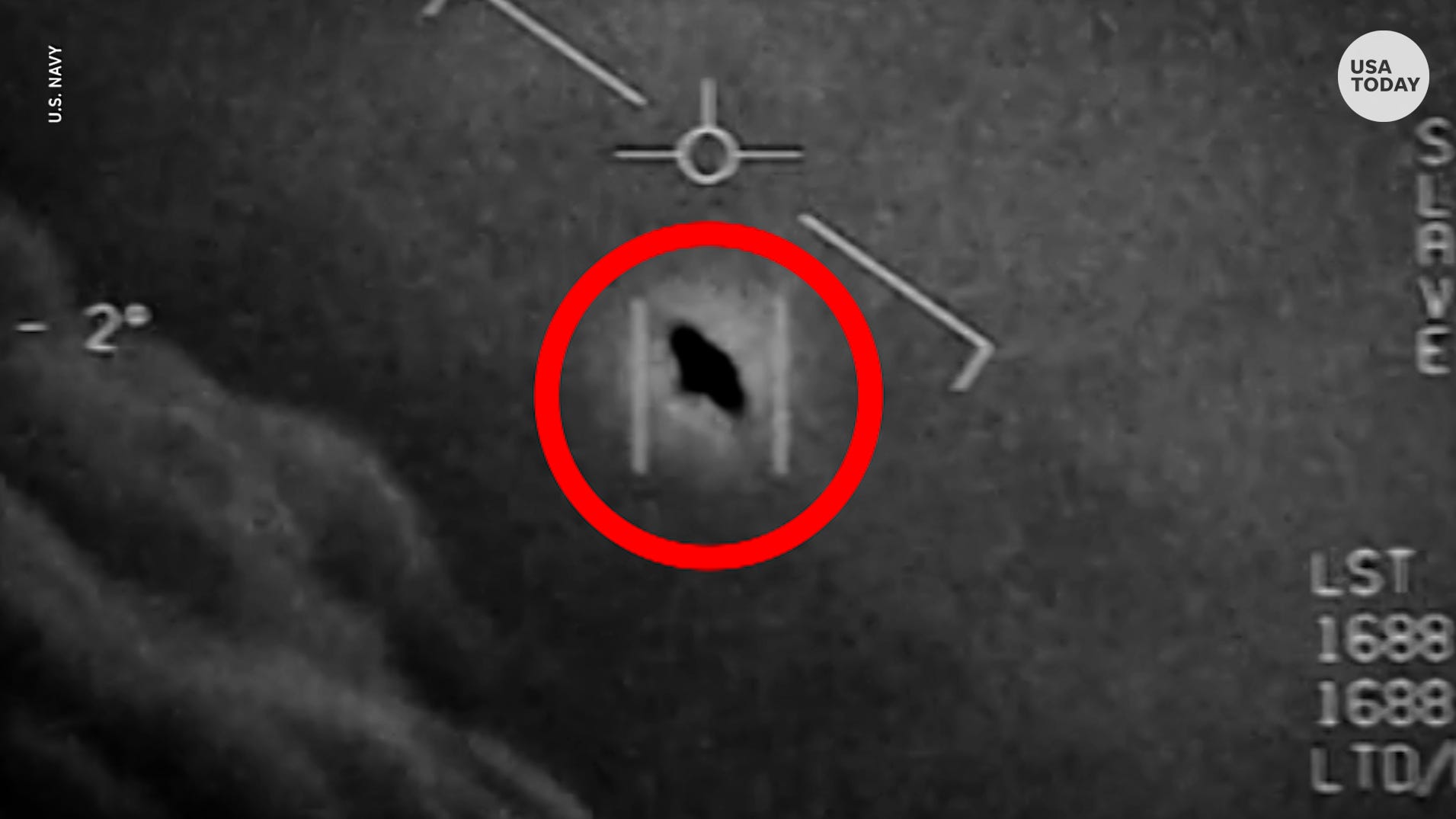‘We can’t ignore this’: UFO sightings spark concern from more than just conspiracy theorists

When Daniel Drezner wrote about UFOs in 2019, he worried the column could tank his credibility, both as a professor of international politics and as a columnist.
But he said the evidence had been mounting for awhile. Among the most striking: A video showing a Navy fighter jet locking onto a mysterious target streaking across the sky as a pilot incredulously asks “What is that, man?”
The video is authentic, the Navy has said without offering an explanation.
That video helped prompt Drezner to join an increasingly mainstream group of academics, journalists, intelligence officials and politicians who say acknowledging UFOs exist doesn’t mean embracing conspiracy theories or even believing in extraterrestrial life.
While UFOs are often synonymous with aliens in pop culture, those who study the phenomenon say UFOs should be understood by their literal name: unidentified flying objects. Once identified, they may have a mundane explanation — weather balloons, drones or the planet Venus.
But for now, some sightings don’t yet have widely accepted explanations, including examples documented on camera, by multiple witnesses and with radar. Those most concerned about the phenomenon say some sightings suggest advanced craft performing maneuvers that should not be physically possible.
The view has been further bolstered by comments from high-level figures, including former President Barack Obama, who recently acknowledged that “there is footage and records of objects in the skies that we don’t know exactly what they are. We can’t explain how they move, their trajectory.”
That’s led people like Drezner to conclude more bluntly: “What I do know is that UFOs exist … we can’t ignore this any more,” he said.
May 19:Congress-sanctioned UFO report to detail unexplainable ‘sightings all over the world’
The view has been thrust into the spotlight recently, with news that an unclassified Pentagon report on UFOs is soon headed to Congress.
“There’s no question anymore that UFOs are real,” author and independent journalist Leslie Kean told USA TODAY. Kean has co-written several New York Times articles on UFOs. Those reports, which included footage later confirmed by the Navy, are often cited as the beginning of a recent surge in the public’s UFO interest.
After studying the phenomenon for over two decades, she said she’s open to connecting UFOs with extraterrestrial life, but she’s quick to distance herself from conspiracy theorists. The people who have researched UFOs the most tend to be “agnostic about what they are,” she said.
She described the connection between UFOs and extraterrestrial life as an easy one for many people to make, aided by decades of films and books on the subject. But she hopes the growing interest in the topic will prompt study from scientists who may offer other explanations.
The subject is one of mankind’s favorite fascinations. History, and Wikipedia, are replete with UFO sightings, dating back to 1440 B.C. when “fiery disks” were allegedly seen over the skies of Egypt. But some have come to doubt the papyrus the sighting was written on.
Opinion:Why you should be skeptical of recent reports on UFO sightings
Fast-forward 3,000 years, and hundreds, if not thousands, of sightings have been chronicled. Most end up on the scrap heap of galactic research, with explanations ranging from fireflies on windshields to crop dusters in the high sun to the Aurora Borealis on a clear night.
But some sightings endure to challenge imagination and explanation, such as the so-called “Gorman Dogfight” of 1948, when an Air Force captain said with certainty he sighted and aggressively pursued a UFO in the skies over Fargo, North Dakota, before the mysterious craft went into a steep vertical climb that outmaneuvered his P-51 Mustang aircraft. A year later, the Air Force concluded the pilot had been chasing a lighted weather balloon.
In recent years, “the issue itself has acquired a level of credibility,” said Kean, citing a variety of reasons. Politicians from both parties have expressed national security concerns. The videos published by the Times provided new evidence. Pilots began talking on the record about their experiences.
Even so, people pushing for more study of UFOs still face stigma. When Luis Elizondo told “60 Minutes” this year that the government has been studying UFOs, Bill Whitaker reminded the former Pentagon official, “It sounds nutty, wacky.”
“I don’t care about the stigma and taboo,” Elizondo, former director of the Defense Department’s Advanced Aerospace Threat Identification Program, told USA TODAY. There’s “something in our skies … that we don’t have an answer for.”
But skeptics say evidence and experience suggest the concern about UFOs is overblown. “There’s all sorts of things we don’t understand,” Seth Shostak, a senior astronomer at the SETI Institute, told USA TODAY.
He noted, for example, that some rules of physics have recently been called into question by new research without a public outcry. It’s not alarming to acknowledge humans encounter things they don’t understand, he said.
Shostak said a number of UFO sightings don’t yet have an adequate explanations, but whatever the explanation is, it’s likely less interesting than an alien invasion.
Some recent videos might seem more fantastic then they really are due to processing artifacts, optical illusions and focusing issues, a recent USA TODAY opinion piece argued.
Although Shostak researches the possibility of extraterrestrial life, he said it’s most likely found among the stars, not floating in our skies.
UFO sightings have been happening for decades and don’t appear to be endangering the public or causing harm, he said: “They are irrelevant … they don’t change the daily news at all.”
Even if a fantastic explanation for UFOs exists, it will likely be an uphill battle to convince many people to believe it, according to Gleb Tsipursky, who holds a Ph.D. in the history of behavioral science and has written about cognitive biases and truth in politics.
The public tends to reject concepts that challenge the status quo, Tsipursky said. It’s the same reason it took so long for many people to realize that COVID-19 was a historic pandemic and why so many people dismissed Donald Trump’s viability as a politician: “What doesn’t fit our worldview gets filtered out,” Tsipursky said.
Elizondo is quick to connect UFOs to other paradigm-shifting discoveries that started at the edges of society and quickly met with pushback and mockery. Einstein met resistance to his theories, which later redefined our understanding of space and time, Elizondo noted.
Every time we think we understand nature, “we’re proven wrong,” he said.
“The universe is constantly revealing herself.”
Contributing: Dustin Barnes and Mike James, USA TODAY; The Associated Press
*** This article has been archived for your research. The original version from USA TODAY can be found here ***


